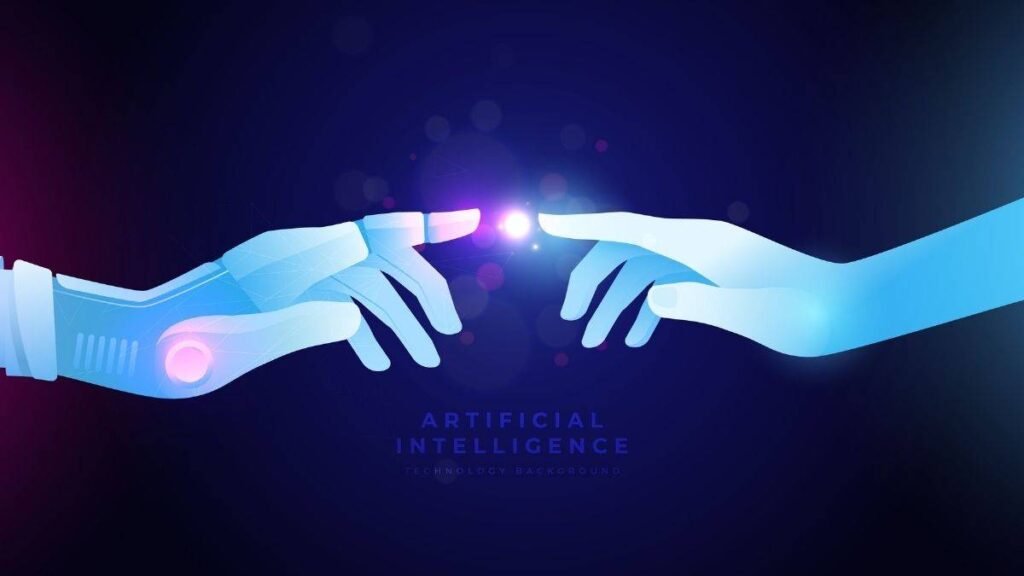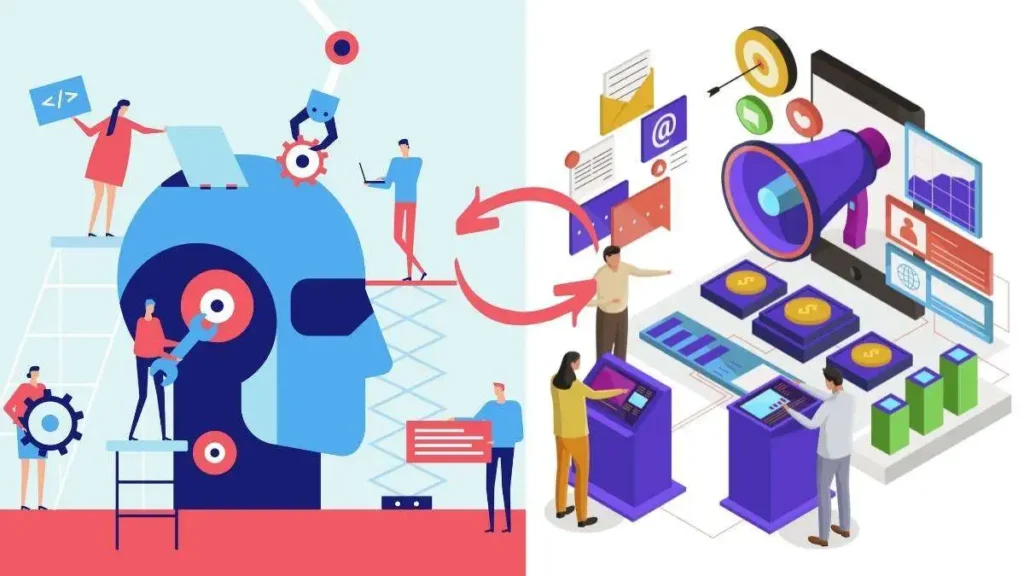Delve into the world of chatbots and strengthen your communications skills by following this building chatbot guidelines that are designed not only for just the expert. From start to finish, we will walk you through the whole journey of building a smart or intelligent chatbot which will let you tailor your chatbot to your very own needs. That is not simply just a chatbot; it is a chatbot endowed with a brain.
A shrewd chatbot conversationalist who is guaranteed to raise the conversation a notch above. You could be anyone: an expert consuming new knowledge, a business professional who is on the lookout for new ideas, or an individual who wants to interact with AI professionals to gain expertise.
Whether you are a non-writer or an experienced creative expert, the knowledge and tips in this book would be of enormous value to you.
By completing this guide, you will accomplish a unique and responsible chatbot with the assistance of specialized AI consulting services. So buckle up! We are off to an amazing adventure traversing through the world of chatbots!
Understanding the Basics: What is a Chatbot?
Imagine this: chatting with a friendly AI that’s always there to help – these are chatbots! Using everyday language and personal info that they learn, these digital pals make life easier when you are looking for the best info and fast answers – to help you shop, find updates, or just have a good laugh! They get better the more they converse, learning from you and each other. So, next time you need assistance, don’t be shy… talk it out with these friendly little bots!
Step 1: Define the Purpose and Scope
In terms of understanding the phase is crucial, to know what tasks your intelligent chatbot needs to perform. The challenges it must tackle are key features, for instance, a customer service chatbot should handle queries and complaints while a shopping assistant chatbot ought to suggest products based on user preferences.
Determining the scope involves evaluating the chatbot’s capabilities, potential conversation complexity and length integration needed with systems, like customer relationship management software and expected levels of personalization. This stage is vital, for setting the course of chatbot development and determining the resources and technologies.
Step 2: Choose the Right Technology
In the process of creating a chatbot, deciding on the most appropriate technology stack is of paramount importance, with identifying an ideal AI and NLP platform being a critical part of the equation.
This is where AI services can provide great help. To propose a platform that meets your objectives, experienced consultants will take into account your requirements, budget, and technical knowledge.
Here are some popular options, each with its strengths:
- Google Dialog Flow:
This one goes beyond French or English, with easy-to-add integrations to other Google Cloud services (such as the Speech API, Natural Language API and Translation API) so that you can scale up your bot and eventually begin to plug in other Google services.
Your first language is…?
Bot: I only understand spoken French and English (unless you speak Dutch) But they can help you use those bits and pieces to build a really capable tool.
- IBM Watson:
Often hailed as having the strongest NLP capabilities among commercial systems, it deals well with complex Natural Language tasks where a higher ability to understand and process human language is necessary.
If your chatbot will be required to deal with complex interactions or queries including a deep understanding of the nuances of human language, Artificial intelligence consulting service providers can instruct you on how to leverage IBM Watson’s capabilities.
- Microsoft Bot Framework:
An all-in-one environment to develop your intelligent chatbot, which plays nicely with all those Azure services and other Microsoft products if you want to make your life easy. It helps you integrate seamlessly and benefits from being part of the familiar Microsoft ecosystem if that still aligns with your infrastructure stack.
After all, these platforms already contain pre-built NLP functionality that will enable your chatbot to talk to users appropriately. They can walk you through the process of defining your chatbot’s purpose, the design of interesting conversational flows, training your model with relevant data, and optimising for high performance.
You can connect with some AI development services that can enhance your chances of creating a successful chatbot that delivers value for your business.
Step 3: Designing the Conversation Flow
In conversation design, we are writing the script of the dialogues in terms of what the chatbot says, and how it operates with the users. To do that, we have a whole workflow, and a script like an actual play that you would write. So this step is all about thinking about every single user path, every single question, every single answer, and how they interlock.
Developers can use tools such as Botmock and Botsociety to create a flowchart or storyboard conveying every possible conversation path. The chatbot should be designed to appear as natural and as realistic as possible.
Step 4: Training with AI and Machine Learning
Training a chatbot includes providing it with large datasets of conversation logs among other things to enable it to learn and perfect its responses. This process is based on machine learning algorithms, particularly natural language processing (NLP), to understand and interpret user queries and to learn from the interaction.
The quality of the training dataset & its size are the main factors. A wide-range dataset would allow the chatbot to be more comprehensive and flexible. This training process is continuous and iterative because the intelligent chatbot needs to keep updating its database in terms of new phrases, slang, and changed language use over time.
Step 5: Integration with Messaging Platforms
It is at this stage that the chatbot will be deployed to different platforms that can be used by users. This can be your website, social media platforms (humanized for Facebook Messenger, WhatsApp, or Telegram), or even internal communication channels for enterprise chatbots.
Each platform has its integration API that must be used properly to ensure the chatbot can be deployed with success. This requires knowledge of the platform’s APIs and how they deal with messaging, user data and other functionalities.
Step 6: Testing and Iteration
The testing process implies a thorough evaluation of the chatbot’s efficiency. This comprises functional testing (for finding any bugs or errors) and conversational testing ( to evaluate the efficiency of how the bot handles real-life conversations).
Rolling out the chatbot to a contained audience facilitates obtaining invaluable assessments of its performance. This feedback would be used to make iterative improvements which is an ongoing process as user needs and behaviors keep evolving.
Step 7: Continuous Learning and Updating
An intelligent chatbot is not a “set and forget” solution, it needs to be maintained continuously and upgraded. Here, there is a need to frequently retrain the chatbot with a new dataset to improve its understanding and response. AI and machine learning algorithms enable the chatbot to learn from new conversations, thus adjusting its responses and becoming smarter, step by step.
Use Case: Customer Service Chatbot
Let’s go with a real-life example – developing a chatbot for customer service.
Consequently, the intelligent chatbot will need to be integrated with the company’s customer service database to access any FAQs and transactional data. It also may need a handoff feature for passing sophisticated queries to human agents. What is important here is that the chatbot adds value to the customer experience, to guarantee prompt and accurate answers.
Ethical Issues and Privacy of the Users.
Ethical aspects and users may not be considered when constructing a intelligent chatbot, in particular an AI-powered one or one that uses machine learning. It’s important to make AI usage transparent and to ensure the data protection of the users by handling it securely and ethically.
Conclusion: Intelligent Chatbots and the Days to Come.
In conclusion, the optimal functioning of an intelligent chatbot requires a mix of technological sophistication, user experience design, and also lifelong learning. Now with the development of AI technology, chatbots will perform better and better, which will only bring them more and more to our digital lives.
Chatbots are very useful for customer service, e-commerce, and any other purpose, which means that they can dramatically increase user engagement and also satisfaction.
The use of chatbots is getting widely implemented in our daily lives and they will likely assume. With technology moving ahead, Chatbots will keep evolving and become more intelligent to undertake complex jobs and hence will be an essential aid in business and individual lives alike.


